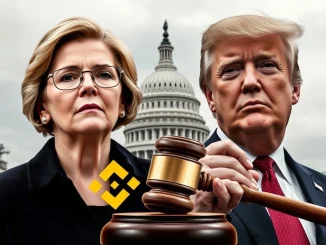
The world of digital assets is constantly evolving, and a key factor influencing its growth, particularly for large players, is clear crypto regulation. Major financial institutions are watching closely, and insights from leaders within these firms offer valuable perspectives on the path forward.
Why is Clear Crypto Regulation So Important for Institutions?
According to Mathew McDermott, Global Head of Digital Assets at the prominent asset manager Goldman Sachs crypto initiatives are directly tied to regulatory clarity. Speaking at a panel during Token2049 in Dubai, McDermott highlighted that establishing clear rules is not just beneficial, but essential for large institutions looking to enter or expand within the crypto space.
Institutions operate under strict compliance frameworks and risk management protocols. Without a clear legal and regulatory environment, deploying significant capital into the crypto market presents substantial challenges. Ambiguity creates uncertainty regarding:
- Asset classification (Is it a security, commodity, or currency?)
- Custody requirements and security
- Tax implications
- Anti-Money Laundering (AML) and Know Your Customer (KYC) obligations
- Consumer and investor protection standards
Addressing these points through comprehensive regulation provides the necessary confidence and legal certainty for institutions to participate. This clarity enables them to navigate the market safely and offer crypto-related products and services to their clients.
Enabling Institutional Crypto Adoption and Scale
McDermott emphasized that clear regulation will make it significantly easier for large institutions to not only deploy capital but also to achieve scale development in the crypto field. Think about large investment funds, banks, or asset managers. Their operations involve managing vast sums of money and serving a broad client base. Scaling their involvement in digital assets requires infrastructure, operational procedures, and legal frameworks that align with their existing business models and regulatory obligations in traditional finance.
Clear rules pave the way for the development of institutional-grade infrastructure, such as robust trading platforms, secure custody solutions, and reliable market data providers. This infrastructure is crucial for handling the volume and complexity required for large-scale institutional participation.
How Stablecoin Bills Could Accelerate Digital Asset Adoption
Beyond general crypto frameworks, specific regulatory efforts are also seen as potential catalysts. McDermott pointed to the two stablecoin bills currently being formulated in the U.S. as examples of regulations that could accelerate digital asset adoption.
Stablecoins, cryptocurrencies designed to maintain a stable value relative to an asset like the US dollar, are often viewed as a crucial bridge between traditional finance and the crypto world. They can serve as efficient payment rails, settlement layers, and a stable store of value within the volatile crypto ecosystem.
Regulating stablecoins could:
- Increase trust and confidence in their stability and backing.
- Provide a clear framework for issuance and redemption.
- Address potential systemic risks.
- Facilitate their use in traditional financial transactions and institutional workflows.
A well-defined regulatory environment for stablecoins could unlock significant institutional use cases, from facilitating cross-border payments to enabling efficient settlement of tokenized assets, thereby boosting overall digital asset adoption.
The Path Forward for Goldman Sachs and Institutional Players
The stance from Goldman Sachs crypto leadership underscores a broader sentiment within traditional finance. While many institutions have already dipped their toes into the digital asset space, often focusing on areas like Bitcoin derivatives or private blockchain projects, widespread adoption and integration require regulatory certainty.
Events like Token2049 serve as platforms for industry leaders to discuss these critical issues. The consensus emerging from such discussions is that collaboration between regulators, policymakers, and industry participants is vital to crafting effective and balanced frameworks.
In Summary: Regulation as an Enabler
Mathew McDermott’s comments from Token2049 reinforce a key message: clear crypto regulation is not a barrier, but an enabler for institutional participation and the scaling of digital assets. The development of specific rules, such as those around stablecoins, is seen as a positive step that can accelerate the integration of crypto into the broader financial system. As regulatory clarity increases globally, we can expect to see larger flows of institutional capital and more widespread digital asset adoption.



